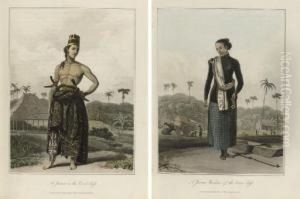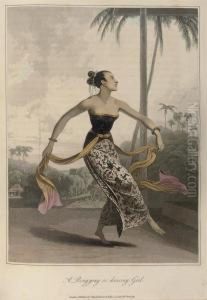Thomas Stamford Raffles Paintings
Sir Thomas Stamford Bingley Raffles was not primarily known as an artist but as a British colonial administrator and statesman, best recognized for his founding of the city and port of Singapore. He was born on July 6, 1781, in off the coast of Jamaica on board the ship Ann. His early life was marked by modesty in terms of financial means, and he was educated largely in the United Kingdom.
Raffles started his career with the British East India Company in 1795, as a clerk in London. He quickly moved to Southeast Asia, where he rose through the ranks due to his intellectual capabilities and interest in the local cultures. Raffles' tenure in the region was characterized by his efforts to expand British influence, and he worked in various posts in Penang and Java. His fluency in Malay and fascination with the region's history and biodiversity were significant in his administrative and scholarly pursuits.
In 1817, Raffles authored 'The History of Java', a comprehensive study of the island, which became a seminal work on Javanese culture and history. His interest in the natural sciences also led to the establishment of the London Zoo and the Zoological Society of London.
Raffles' most enduring legacy is the founding of Singapore in 1819. He envisioned the island as a strategic trading post for the British Empire to counter Dutch dominance in the region. His establishment of Singapore as a free port was instrumental in the city's rapid growth as a major hub for trade and commerce.
Raffles' health began to deteriorate due to overwork and the tropical climate, and he returned to England in 1824. He died on July 5, 1826, at the age of 44, in London. Although not an artist, Raffles' contributions to the understanding and appreciation of Southeast Asian cultures, as well as his founding of Singapore, have left a significant cultural and historical impact. His name is commemorated in numerous institutions and landmarks across Singapore and the region.

